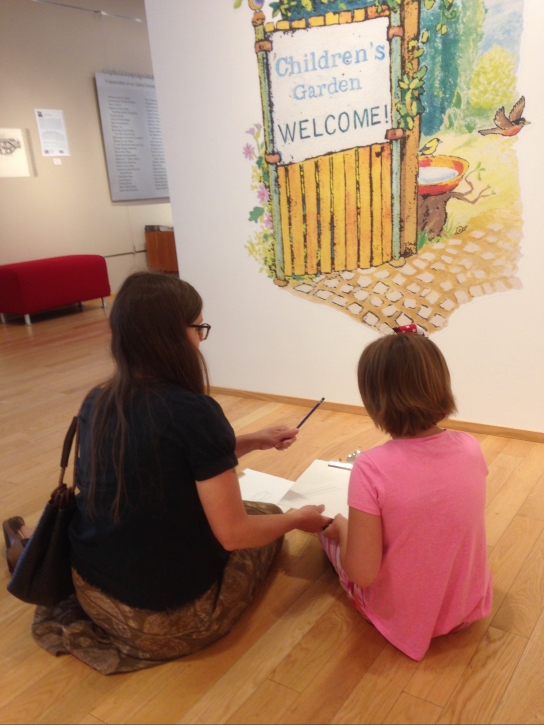Assessment
Two philosophical beliefs provide foundation to how assessment should be carried out and utilized in multiage educational programs.
- Assessment is a part of a fully integrated whole to the school program.
- Assessment best supports students when it is used to inform instruction rather than to simply evaluate students.
Multiage educators believe that students follow their own individual pace of learning  and that each student’s pace is not always constant. Children can at times learn quickly while at other times they will learn more slowly, similar to the physical growth spurts that occur during a student’s childhood. This varied pace can also fluctuate between subject areas as well as with passions for various subjects or areas of learning. While a student may be rapidly progressing in an area such as math during the first part of a school year, they may equally as likely show a relatively stagnate pace in reading comprehension during that same period of time, only to reverse this during a latter part of the year or during a subsequent year. This is one of the reasons many progressive schools use a multiage structure* throughout their program, it more easily supports students as they go through these natural fluctuations in learning pace and passions. Multiage educators further believe that the best way to support children, to best meet the students’ needs as they each follow their own academic growth spurts, is for assessment to be student- small group- and class-specific. To do this schools must treat teachers as professionals and rely on them create and use meaningful assessment strategies and materials – all guided by comprehensive curriculum maps, benchmarks, and of course the students themselves.
and that each student’s pace is not always constant. Children can at times learn quickly while at other times they will learn more slowly, similar to the physical growth spurts that occur during a student’s childhood. This varied pace can also fluctuate between subject areas as well as with passions for various subjects or areas of learning. While a student may be rapidly progressing in an area such as math during the first part of a school year, they may equally as likely show a relatively stagnate pace in reading comprehension during that same period of time, only to reverse this during a latter part of the year or during a subsequent year. This is one of the reasons many progressive schools use a multiage structure* throughout their program, it more easily supports students as they go through these natural fluctuations in learning pace and passions. Multiage educators further believe that the best way to support children, to best meet the students’ needs as they each follow their own academic growth spurts, is for assessment to be student- small group- and class-specific. To do this schools must treat teachers as professionals and rely on them create and use meaningful assessment strategies and materials – all guided by comprehensive curriculum maps, benchmarks, and of course the students themselves.
Multiage educators also understand that the healthy progress of children is stronger when learning is based on success, as opposed to emphasizing shortcomings as in a deficiency model. The later points out what is “wrong” while the former builds strength and a positive image that better supports overall forward progress. This doesn’t mean that multiage educators don’t look at challenges and what the next academic hurtle will be, it just means that learning is celebrated as forward progress rather than over focussing on what is missing. This is what communication with individual students is based on in a multiage program, assessment that celebrates personal progress and the next learning steps to be taken along their academic continuum.
When multiage teachers share with parents and guardians the individual progress of their children, they communicate that assessment is based on the criteria of the assignments given and the individual student’s own personal progress for each area. This is often reflected through the shorthand of grades on progress reports which are augmented through conversation during parent/teacher conferences as well as during individual conversations throughout each school year. Realizing that this doesn’t always meet the concerns of parents in regards to their child’s standing in relation to their age peers, multiage educators often include two or more age- or grade-specific measurements used specifically to inform parents of academic standing relative to standardized age norms; reading level and mathematics benchmarks are often the most appropriate. Each student’s reading level can be based on reliable metrics such as the Woods and Moe Analytical Reading Inventory or the leveled assessment materials from Fountas and Pinnell (http://www.fountasandpinnellleveledbooks.com). To inform parents of mathematical progress, achievement can be communicated via math benchmarks. These benchmarks are standardized through foundational resources such as Washington State Mathematics Learning Standards or other state standards, and The National Council of Teachers of Mathematics (NCTM). Both of these age-specific measurements should be communicated strictly to parents and guardians, not to the students themselves.
Preschool progress in a multiage program should be based on the same overall philosophy, but the manner of assessment should be more appropriately focussed on observational strategies as well as personal, social, and physical skill development.
Unfortunately the large standardized tests that are common in the U.S. compare students against standards created for specific ages. They are not supportive of multiage educational programs. These tests tend to be evaluative, high stakes in nature, are designed to be age-specific, are typically administered yearly, and the results often don’t get back to the teacher in time for instruction to be modified for individual students. In the long run they tend to inadvertently cause educators to “teach to the test,” just the opposite of teaching children based on their individual learning needs or style.
Assessment needs to support the partnership of students, teachers, and parents as they find ways to best support the growth of each child.


